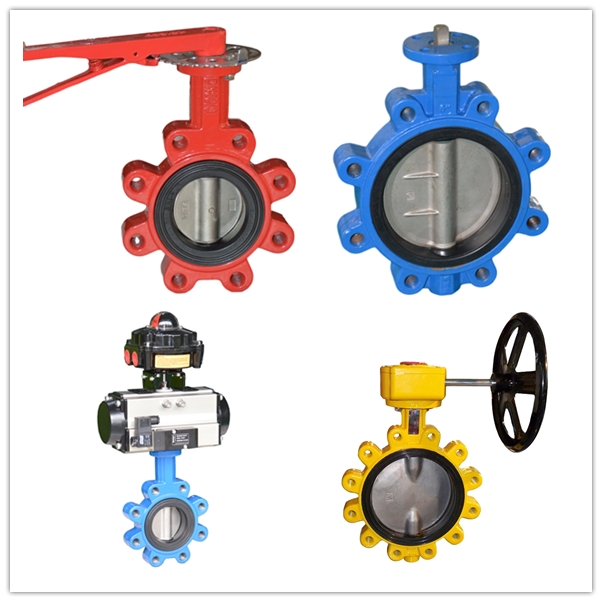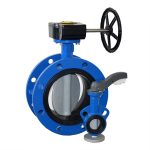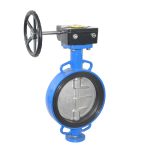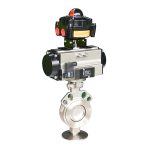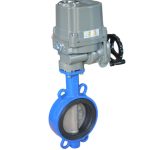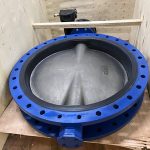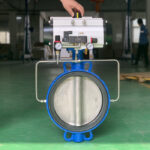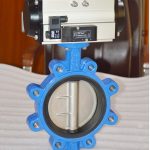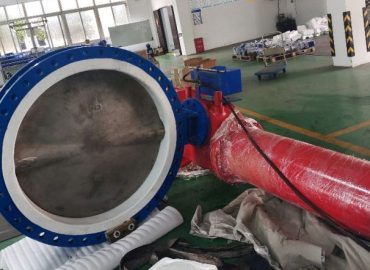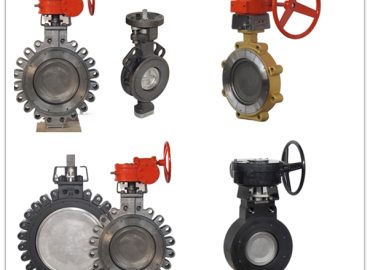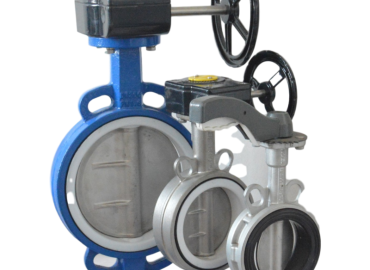Selecting the right RTFE seat butterfly valve for your industrial process requires careful consideration of various factors to ensure optimal performance, durability, and safety. Many factors must be taken into account, such as the material used, the size of the valve, the operating conditions, the application requirements, and the brand reputation. In this blog post, we will explore the essential factors that are crucial to consider when selecting a RTFE seat butterfly valve, why they matter, and how to evaluate each factor carefully to make an informed decision. Whether you’re an engineer, a plant manager, or a maintenance professional, this post will provide a comprehensive guide for selecting the best RTFE seat butterfly valve for your industrial needs.
Introduction
The most important factors to consider when selecting a nbr seat butterfly valve include the material used, the size of the valve, the operating conditions, the application requirements, and the brand reputation. The material used to make the valve should be carefully considered to ensure it offers the necessary chemical resistance, temperature stability, and strength required for the application. The valve size should match the flow rate requirements of the process and be optimized for efficient operation. The operating conditions, such as temperature, pressure, and media compatibility, should be taken into account to ensure proper valve function and longevity. Application requirements, such as precision control, maintenance needs, and modulating capability, should also be considered. Finally, the reputation and expertise of the manufacturer should be evaluated to ensure optimal quality, service, and support for the valve. By taking into account these factors, you can identify the best RTFE seat butterfly valve for your industrial needs.
Brief explanation of RTFE seat butterfly valve
A RTFE (reinforced tetrafluoroethylene) seat butterfly valve is a type of valve commonly used in industrial applications to regulate the flow of fluids through pipes. It consists of a metal disc, or “butterfly,” mounted on a rod within a circular housing. When the valve is closed, the butterfly blocks the flow of fluid. When the valve is open, the butterfly rotates perpendicular to the flow of fluid, allowing it to pass through the valve. RTFE is often used as a valve seat material due to its excellent chemical resistance and temperature stability, making it suitable for use in harsh environments such as the chemical industry. The use of RTFE in valve seats helps to prolong valve life, reduce maintenance requirements, and protect downstream equipment from damage caused by fluid contamination or leakage.
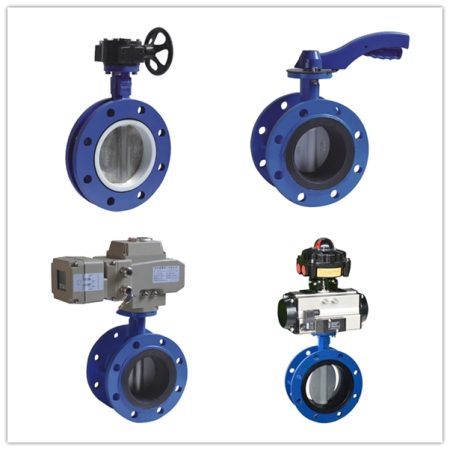
Purpose of the article
The purpose of this article is to provide an in-depth guide for selecting the best RTFE seat butterfly valve for your industrial process. We will cover the most critical factors to consider when selecting a valve, including material, size, operating conditions, application requirements, and brand reputation. By the end of this article, you will have a comprehensive understanding of the key factors that influence the performance and cost of a RTFE seat butterfly valve and know how to choose the best valve for your industrial needs. Whether you’re a seasoned professional or new to the field, the insights provided in this article will help you make an informed decision when selecting a RTFE seat butterfly valve.
Material Selection
Material selection is a vital consideration when selecting a EPDM seat butterfly valve. RTFE is a popular material for valve seats due to its excellent chemical resistance, low friction coefficient, and temperature stability. However, the material used in other components of the valve, such as the disc, stem, and housing, can also impact performance and longevity. Factors such as the process requirements, type of media flowing through the valve, and temperature and pressure conditions must be considered when selecting valve materials. The material should offer the necessary corrosion resistance, strength, and durability required for the application. Selecting the best material can help ensure maximum valve life, minimize service and maintenance needs, and protect downstream equipment from fluid contamination or leakage.
Explanation of RTFE material
RTFE (reinforced tetrafluoroethylene) is a thermoplastic material that exhibits excellent chemical resistance, thermal stability, and mechanical properties. It is commonly used in valve applications due to its nonstick, low-friction characteristics, and resistance to a range of chemicals and solvents. The reinforcement material varies depending on the application requirements and may include ceramics, carbon, or glass fiber. The addition of reinforcement materials increases the strength and wear resistance of RTFE, making it suitable for use in high-stress applications. Its low coefficient of friction also allows for minimal wear and optimal flow efficiency. RTFE is often used in valve seats and other components to provide long-lasting, stable valve performance.
Material Compatibility based on Application
Material compatibility is crucial when selecting a RTFE seat butterfly valve. The fluid or gas flowing through the valve can have varying degrees of corrosiveness and react differently with different materials. The temperature and pressure of the application environment also impact material compatibility. For example, highly reactive chemicals like acids or alkalis require valve components that are chemically inert. On the other hand, abrasive media require wear-resistant components. High-temperature applications, above the RTFE melting point, may require different materials such as ceramic or metal. It is essential to consider material compatibility based on the specific application requirements to avoid problems such as leakages, valve damage, and contamination of processes. A compatibility check can be done using material compatibility charts, expert knowledge, and suitable material testing methods.
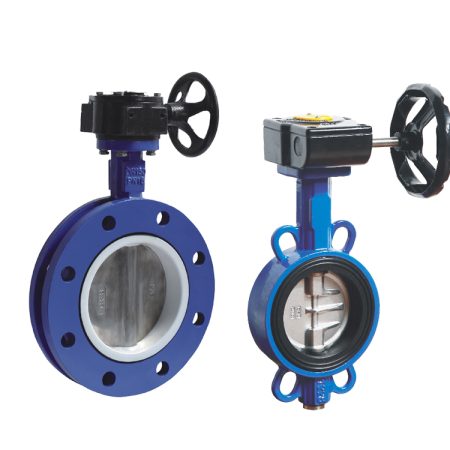
Benefits of RTFE seat
RTFE seat butterfly valves offer several benefits in industrial applications. The reinforced tetrafluoroethylene (RTFE) material used in valve seats provides superior chemical resistance to a wide range of corrosive and abrasive fluids. It also offers an exceptionally low coefficient of friction, which reduces wear and tear while ensuring efficient flow control. Furthermore, RTFE is thermally stable, so it can handle high-temperature processes without degrading, cracking, or melting. This makes it an ideal choice for harsh conditions that involve high temperatures, pressures, and chemical exposure. In addition, RTFE is easy to machine and install, which simplifies valve assembly and reduces valve installation and maintenance costs. Overall, the benefits of RTFE seat butterfly valves make them a popular choice for industrial applications requiring reliable, efficient, and safe flow control.
Size of the Valve
Selecting the appropriate size of a RTFE seat butterfly valve is crucial to ensure optimal performance and efficiency of your industrial process. An appropriately-sized valve can help to maximize flow control and reduce energy consumption and costs. Factors such as flow rate, pressure drop, viscosity, and piping layout are all considered when choosing the correct valve size. If the valve is too small, it can result in insufficient flow rates, high pressure drops, and excessive turbulence that can damage the valve. Similarly, if the valve is too large, it can increase costs, reduce performance efficiency, and cause problems with valve positioning and installation. Therefore, finding the optimal valve size is essential to ensure that your process operates smoothly, reliably, and within budget.
How Size affects Flow Rate?
The size of a RTFE seat butterfly valve has a direct impact on flow rate. When selecting the valve, it is essential to consider the expected flow rate of the process to ensure the valve can provide optimal flow control. A larger valve allows for a higher flow rate and a lower pressure drop, while a smaller valve provides lower flow rates, higher pressure drops, and increased turbulence. In addition, oversized valves can lead to inaccurate flow control and increased costs, while undersized valves can cause restricton and result in valve damage. Hence selecting the right size of the valve is crucial to ensure maximum flow control, efficiency, safety, and cost-effectiveness in your industrial process.
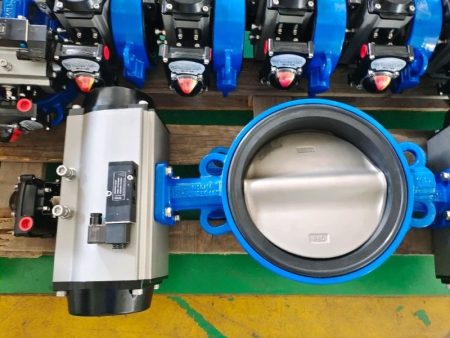
How to determine the optimal size valve for your system
To determine the optimal size of a RTFE seat butterfly valve for your system, several factors should be considered. These factors include the flow rate requirements, piping layout, pressure drop, and fluid viscosity. The flow rate must be determined as accurately as possible to select the appropriate valve size. Piping layout and the fluid viscosity play a role in selecting the correct valve size by indicating whether a larger or smaller valve is needed to maintain the appropriate flow rate and pressure drop. Additionally, considering the pressure drop across the valve is important in selecting the correct valve size, especially for low-pressure systems. Detailed system design information is necessary to determine the correct valve size. The expertise and consultation of a valve specialist can also provide valuable insight into selecting the appropriate size valve to meet your system’s requirements.
Costs involved with larger size valves
Larger size RTFE seat butterfly valves may involve higher costs compared to smaller size valves. The larger the valve, the more materials and manufacturing processes are required, which can make it more expensive. Additionally, larger valves may require specialized lifting and transportation equipment for installation, which increases installation costs. Furthermore, larger valves may require greater operating energy and incur additional maintenance or repair costs. However, it is important to note that selecting a properly sized valve for your system can result in improved efficiency and reduced energy costs, which can offset the initial investment in a larger valve. Ultimately, careful consideration of system requirements and overall project budget is needed to determine the appropriate valve size that best balances performance and cost-effectiveness.
Operating Conditions
Operating conditions are a crucial factor to consider when selecting a RTFE seat butterfly valve. These conditions can include temperature, pressure, and the nature of the fluid or gas being controlled by the valve. Extreme temperature variations, corrosive environments, and high pressures can cause rapid degradation of valve components and negatively impact valve performance. It is essential to choose materials and designs that can withstand the operating conditions to ensure that the valve functions safely and reliably. Additionally, other operating conditions such as flow rate, viscosity, and the type of flow (turbulent or laminar) affect the valve’s performance and flow control. The right valve selection can result in optimal performance and longer service life. Therefore, selecting a valve that can handle the operating conditions of your industrial process can ensure safe, reliable, and efficient valve performance.
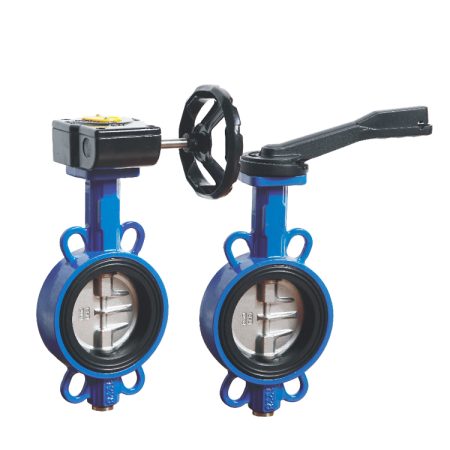
Explanation of Operating Conditions
Operating conditions relate to the environmental factors such as pressure, temperature, and the properties of the fluids or gases that are being controlled in your industrial process. Understanding these conditions is essential in selecting the most appropriate RTFE seat butterfly valve for your application. For instance, high-pressure conditions require choosing a valve with a higher-pressure rating to avoid damage to the valve seat and other components. Similarly, high-temperature environments require selecting materials that can withstand high temperatures without degrading or melting. Fluid or gas properties also impact the valve selection since the material’s corrosiveness and abrasiveness properties affect the valve’s compatibility. Additionally, factors such as the flow rate, viscosity, and the type of flow can also impact the valve operation and performance. Therefore, understanding the operating conditions of your industrial process is crucial in selecting a RTFE seat butterfly valve that can withstand and deliver optimal performance under the given conditions.
Consideration of optimum operating conditions for RTFE material
When considering the optimum operating conditions for RTFE material, several factors need to be taken into account. The material is known for its excellent chemical resistance, low friction coefficient, and high-temperature stability. However, temperatures that exceed its melting point can cause the material to deform and decrease its lifespan. The maximum recommended temperature for RTFE ranges from 120°C to 260°C, depending on the valve application. Likewise, operating conditions with highly reactive or abrasive fluids can impact the material’s stability and lifespan. Therefore, it is essential to select the appropriate materials for other valve components to ensure maximum resistance to these types of fluids. Proper installation and maintenance are also necessary to maintain optimal operating conditions and prevent valve damage or leaks. Regular inspection and maintenance can help identify any issues and ensure optimal valve operation under varied operating conditions.
Benefits of RTFE material to handle extreme operating conditions
RTFE material offers several benefits in handling extreme operating conditions. Its unparalleled chemical resistance makes it ideal for use in corrosive and abrasive environments. RTFE also exhibits a low friction coefficient, which allows for excellent flow control without the need for lubrication, even in high-temperature applications. Furthermore, RTFE’s unique physical properties, such as high thermal stability and low reactivity with most chemicals and solvents, make it a versatile material that can withstand extreme operating conditions. These benefits make RTFE ideal for use in valves for chemical, petrochemical, and other high-temperature industrial processes, where exposure to extreme operating conditions is normal. With its ability to handle extreme operating conditions, RTFE provides reliable, efficient, and safe flow control, ensuring reliable industrial processes and reducing downtime and maintenance costs.
Application Requirements
Application requirements refer to the specifications that are necessary to ensure that a RTFE seat butterfly valve functions optimally for a specific industrial process. These requirements may include the need for high accuracy in flow control, the ability to handle high-pressure conditions, and resistance to corrosive or abrasive media. The specifications may also relate to the size, shape, and torque requirements that are necessary for successful valve operation. Selecting the correct valve to meet the requirements of the application is crucial for preventing leakage, damage to the valve and the media system as well as ensuring that the industrial process runs efficiently and safely. Valve manufacturers provide detailed specifications to help customers choose the right valve to meet the application requirements, including tolerances for temperature and pressure, materials selection, and sizing recommendations. Carefully considering the application requirements and selecting the appropriate RTFE seat butterfly valve can ensure that the valve operates at peak performance and reliability, providing optimal results for users.
Importance of Application Considerations
Considering the application is vital when selecting a RTFE seat butterfly valve because every valve serves a specific function, and identical valves may function differently in different applications. When selecting a valve, considerations must be given to the operating conditions, system requirements, fluid type, and flow rates, among other factors. Choosing the wrong valve for the application can lead to valve failure, poor performance, and potential safety hazards. For example, selecting a valve with a lower pressure rating than required may cause leakages under high-pressure conditions, leading to system failure or personal injury. Failure to consider the effect of fluid properties on valve selection can lead to the selection of materials that are not compatible with the media, causing chemical reactions or valve corrosion. Proper valve selection that considers the application’s specific requirements can help ensure the safe and optimal operation of fluid systems, avoid premature valve failure, reduce maintenance costs and downtime, and maximize efficiency.
Throttling Control
Throttling control involves regulating the flow of fluid or gas through a valve by partially closing or opening the valve to achieve the desired flow rate. Throttling control valves are popular in various industrial applications because of their efficiency in precise flow control. RTFE seat butterfly valves designed for throttling control have a disc that can rotate a full 90 degrees to allow for optimal flow control. Besides, they are designed for compatibility with different types and viscosities of fluids and gases, making them versatile for use in various applications. Throttling control valves help to minimize changes in fluid conditions, such as pressure and temperature, leading to an efficient and effective industrial process. Throttling control can help reduce energy usage, ultimately leading to cost savings and aiding in environmental conservation. Overall, RTFE seat butterfly valves designed for throttling control are a strategic investment for industrial processes requiring precise flow control.
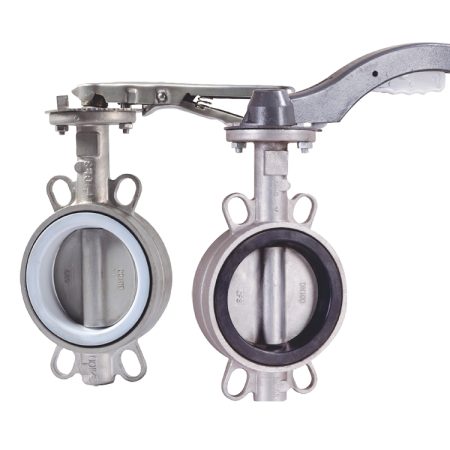
Chemical Compatibility
Chemical compatibility refers to the ability of a material, such as the RTFE used in seat butterfly valves, to resist damage or changes when exposed to different chemicals or fluids. The compatibility of the valve material with the process media is a crucial consideration when selecting RTFE seat butterfly valves since they come into direct contact with these fluids or gases. Various fluids have different chemical properties that can affect the valve material, leading to wear, corrosion, or damage, which could compromise the valve’s performance or cause system failure. Selecting the appropriate valve material based on the chemical properties of the process media is therefore essential for optimal valve performance and longevity. Manufacturers provide a list of compatible materials for different fluid types to guide users in selecting the appropriate valve material for their process media. Understanding the chemical compatibility of the valve material with the process media is essential for ensuring safe, reliable, and efficient valve operation in industrial processes.
Maintenance and Repair
Maintenance and repair of electric butterfly valves are essential to ensure they remain efficient and reliable during operation. Regular maintenance on these valves includes inspection, cleaning, calibration, and lubrication of moving parts to eliminate any possible interference with optimal performance. Maintenance of the valve often includes checking for signs of wear and corrosion, replacing worn or damaged parts, tightening loose valves, and testing for proper functionality before returning the valve to operation. Maintenance intervals for these valves depend on the operating conditions, media, and frequency of use. Repairs, on the other hand, may be necessary when the valve experiences significant wear and tear or corrosion, resulting in leaks or significant performance disruption. Repairs may involve replacing damaged parts, rethreading, or re-establishing the valving system according to the manufacturer’s specifications. Proper maintenance and prompt repair of RTFE seat butterfly valves help prevent unexpected downtime, prolong the valve’s operating life, and save costs by preventing costly system failure.
Conclusion
In summary, selecting and maintaining the appropriate RTFE seat butterfly valves is crucial to maintaining safe, reliable, and efficient industrial processes. Considerations such as operating conditions, flow control requirements, and chemical compatibility are essential to ensure the valve’s optimal performance and lifespan. Additionally, choosing the correct valve for the application can help reduce energy usage, prevent premature valve failure, avoid potential safety hazards, and minimize maintenance and downtime costs. Regular inspection, cleaning, calibration, and lubrication are needed to keep valves in good condition and prevent significant wear and tear or corrosion. Maintenance and proper repair of the valves help to identify and repair faults before they escalate into more significant problems. In all, careful selection and maintenance of RTFE seat butterfly valves contribute to a safe and efficient industrial process.
Recap of the factors influencing the selection of RTFE seat butterfly valve
In recap, several factors influence the selection of RTFE seat butterfly valve. Operating conditions such as pressure, temperature, and chemical compatibility impact valve selection. High-pressure conditions require valves with higher-pressure ratings, while high-temperature environments demand materials that can withstand high temperatures. It is also important to choose materials that are resistant to corrosive or abrasive media. Flow control requirements and system specifications, such as fluid type, flow rates, and sizing requirements, must be considered in valve selection. Additionally, valve application requirements must be factored in to ensure proper valve function and optimal performance. Proper maintenance and repairs are essential to prolong the valve’s lifespan and prevent unexpected downtime. Accounting for these factors ensures safe, reliable, and efficient valve operation in industrial processes.
Importance of making an informed decision
Making an informed decision when selecting RTFE seat butterfly valves is crucial for the optimal performance of industrial processes. The valves play a critical role in controlling fluid or gas flow, and selecting the right valve for the application can result in efficient and safe operations. Failure to make an informed decision can lead to valve failure, system downtime, and potential safety hazards. Understanding operating conditions, flow control requirements, and system specifications are essential in selecting the appropriate valve. Equally important is selecting materials that are compatible with the media flowing through the system. Regular inspection, cleaning, and maintenance help prolong the lifespan of the valve and prevent the need for costly repairs or replacement. Ultimately, making an informed decision leads to reduced maintenance costs, improved efficiency and safety, and increased productivity in industrial processes.
Encouragement to seek guidance from industry professionals
For individuals who may be new to the process of selecting RTFE seat butterfly valves, seeking guidance from industry professionals can help ensure that the correct valve is selected for the intended application. Valve selection involves several factors that can impact valve function and safety, and it can be a complex process. Consulting with professionals who have experience in valve selection and maintenance can help narrow down the choices and provide valuable insight into selecting the appropriate valve material and design. Additionally, industry professionals can provide advice on maintenance and repair to further ensure the valve’s optimal performance and lifespan. Seeking guidance from industry professionals can lead to cost-effective and reliable valve selection, decreased maintenance costs, and improved overall efficiency and safety of industrial processes.


